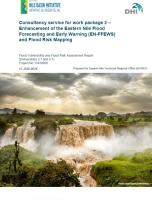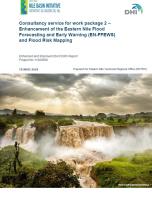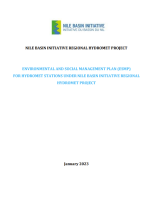Abstract
In 2015, the Nile Basin Initiative (NBI) Secretariat (Nile-Sec) conducted a Strategic Water Resources Analysis (SWRA) with the aim of developing sustainable options for satisfying the growing water needs of the Nile riparian countries and mitigating the current and future water stress. However, Nile-Sec felt that the study had gaps in data sets; in particular, it lacked an integration of economic modeling of water use in terms of assessing the value of irrigation water. Another limitation was that the impact of increased water productivity on food security and water utilization was not analyzed across the basin. The SWRA assessment did not also analyze the impact of optimal planning of cropping patterns on specific climate and soil conditions. Therefore, this second phase study was mandated to refine the current estimates of agricultural water demand/use and projections. The findings of the study are meant to contribute to sustainable and efficient
investment planning to meet the growing water demand envisaged in the Nile-Sec plan. This study aims at aiding the development of options for water savings through measures such as adoption of improved irrigation technologies, optimization of cropping patterns across the basin and other measures that can result in substantial water savings across the Nile Basin (NB). The NB countries will likely face physical and economic water scarcity unless water development gives due consideration to water savings.
As far as the existing situation is concerned, it is generally recognized that improving rainfed agriculture can have a great impact on the economic and food security of the upper riparian countries by enhancing the reliability of rainfed agriculture. Further, incorporating effective watersaving methods and technologies into large irrigation schemes in the lower riparian countries can enhance water availability and thus help those countries in meeting their future water demands. Therefore, plans for future irrigation schemes in the basin might consider the water saving options discussed in this report.
The water-saving scenarios presented here are organized as per two time horizons, 2018-2030 and 2030-2050, and two distinct agricultural typologies, rainfed and irrigated. Five categories of water-saving scenarios are suggested: (i) intensification of rainfed agriculture in the upper riparian countries; (ii) improving overall water-use efficiencies, mainly of large-scale irrigation schemes; (iii) improving the cropping patterns; (iv) application of water deficit irrigation (WDI); and (v) improving water management and basin water supply.




